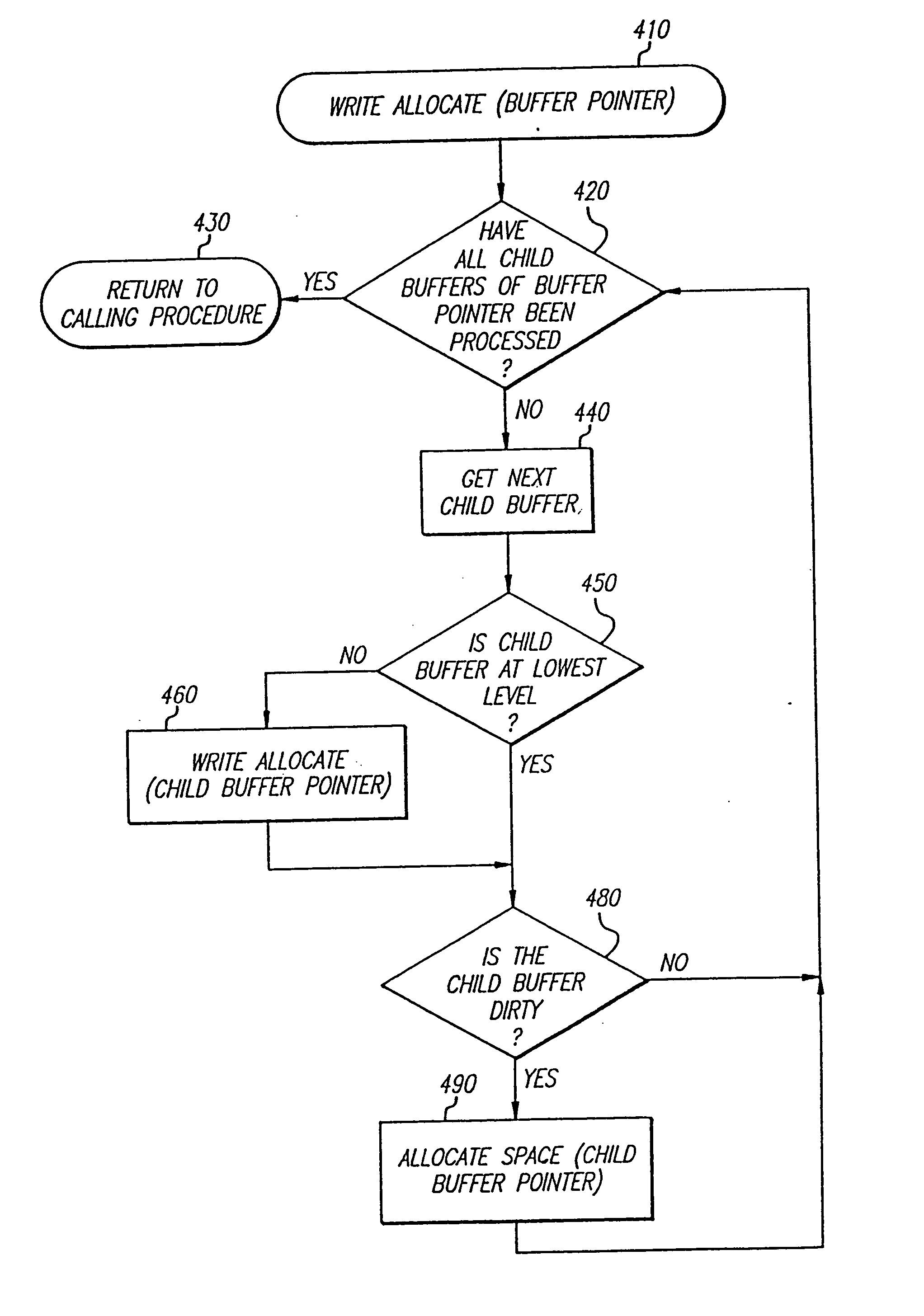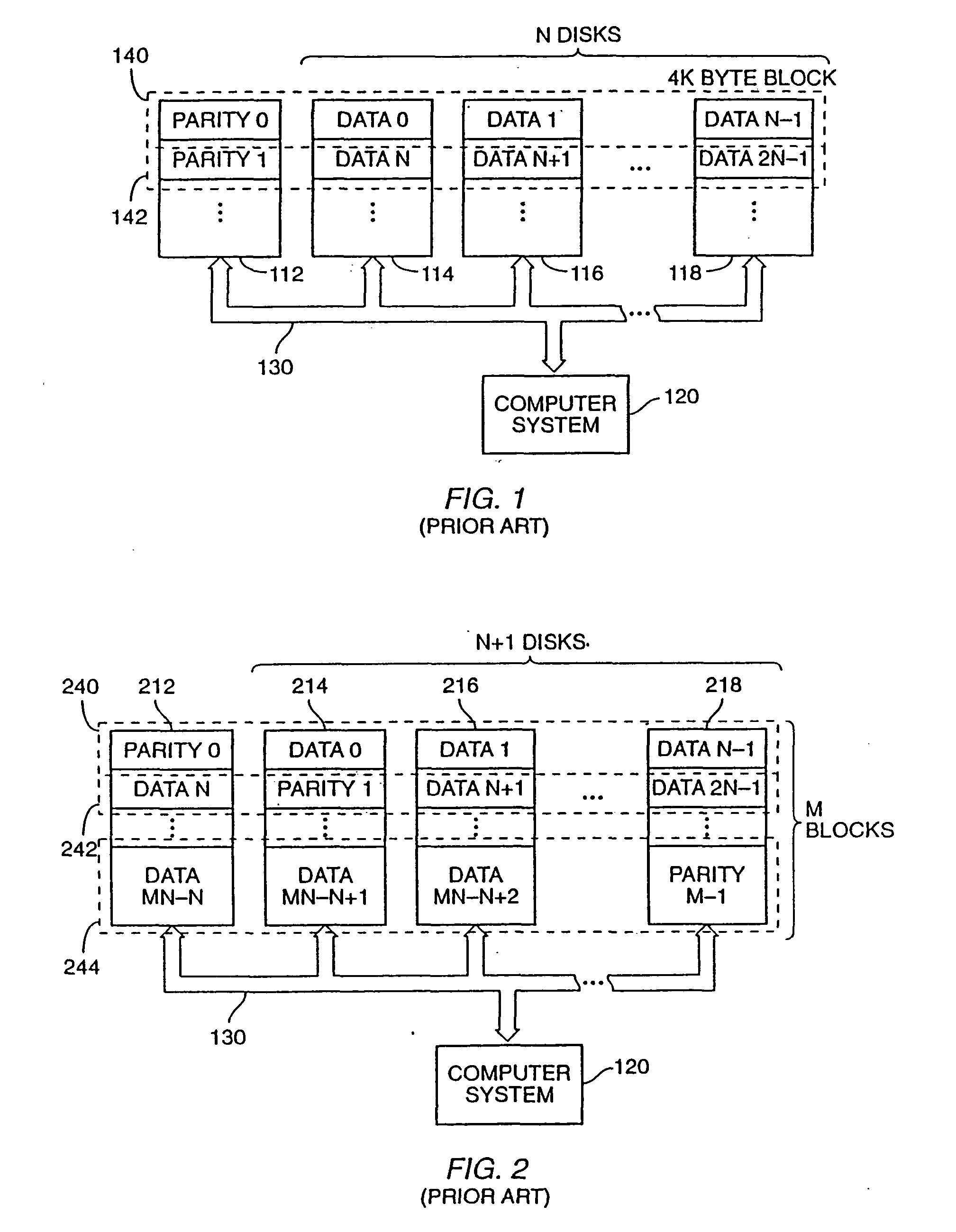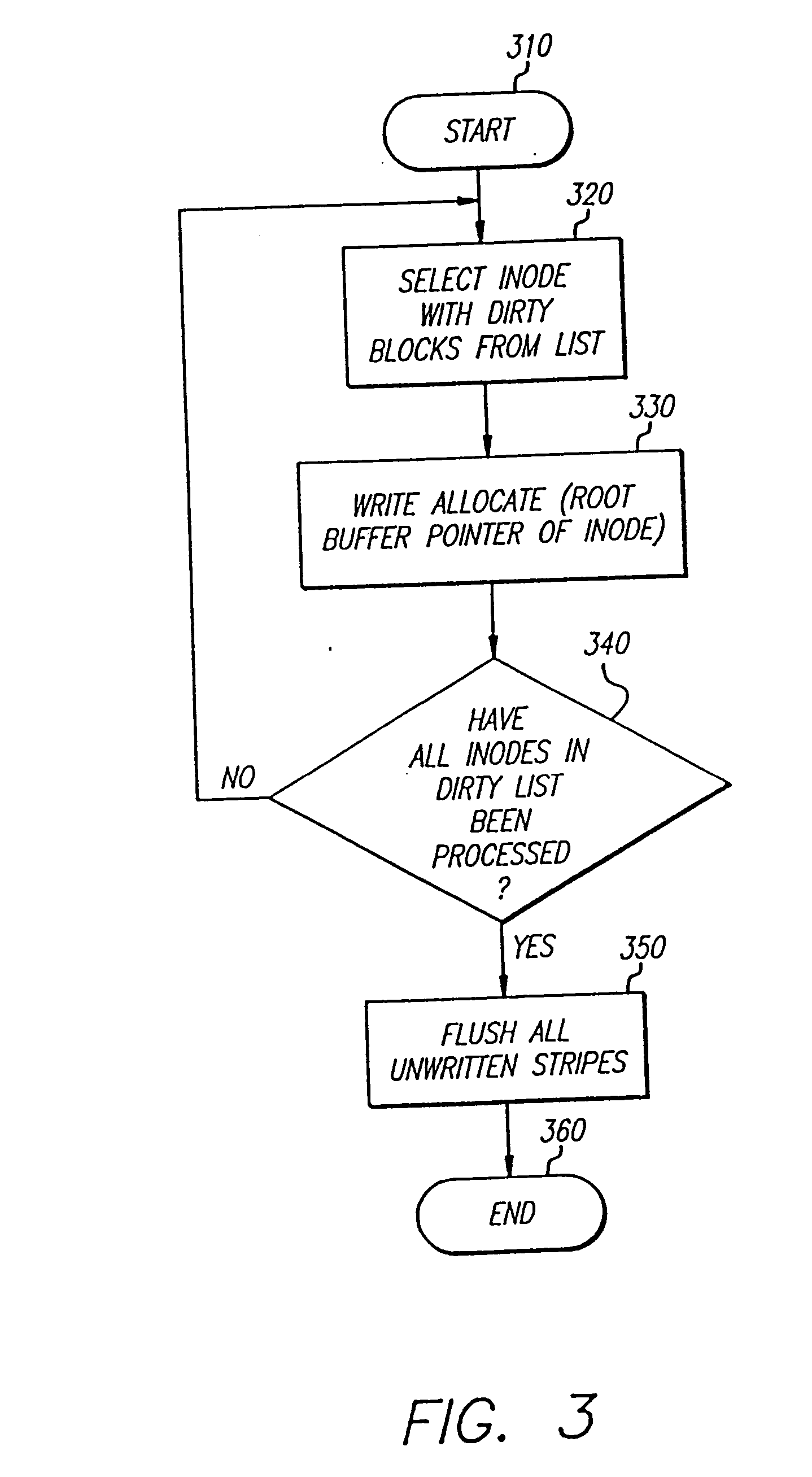Allocating files in a file system integrated with a raid disk sub-system
a file system and sub-system technology, applied in the field of file systems using disk arrays, can solve the problems of system shutdown, lack of redundancy or backup to a single disk drive, and the cost of replacing the drive when greater capacity or performance is required
- Summary
- Abstract
- Description
- Claims
- Application Information
AI Technical Summary
Benefits of technology
Problems solved by technology
Method used
Image
Examples
Embodiment Construction
[0030] A method of allocating files in a file system using RAID arrays is described. In the following description, numerous specific details--such as, number and nature of pointers, disk block sizes, etc., are described in detail in order to provide a more thorough description of the present invention. It will be apparent, however, to one skilled in the art, that the present invention may be practiced without these specific details. In other instances, well-known features have not been described in detail so as not to unnecessarily obscure the present invention.
[0031] For computers used in a networking system, each hard disk operates faster than a network does. Thus, it is desirable to use independent heads in a RAID system. This enables multiple clients to simultaneously access different files stored on separate disks in the RAID array. This significantly reduces the access time for retrieving and storing data in a RAID system.
[0032] FIG. 10 is a diagram illustrating the system of ...
PUM
 Login to View More
Login to View More Abstract
Description
Claims
Application Information
 Login to View More
Login to View More - R&D
- Intellectual Property
- Life Sciences
- Materials
- Tech Scout
- Unparalleled Data Quality
- Higher Quality Content
- 60% Fewer Hallucinations
Browse by: Latest US Patents, China's latest patents, Technical Efficacy Thesaurus, Application Domain, Technology Topic, Popular Technical Reports.
© 2025 PatSnap. All rights reserved.Legal|Privacy policy|Modern Slavery Act Transparency Statement|Sitemap|About US| Contact US: help@patsnap.com



